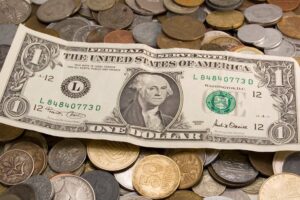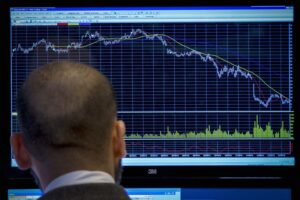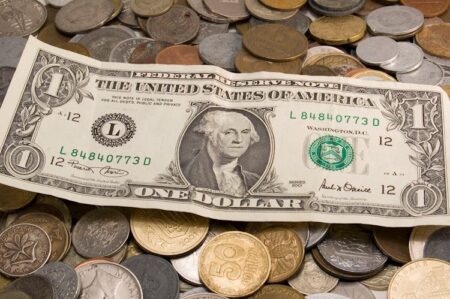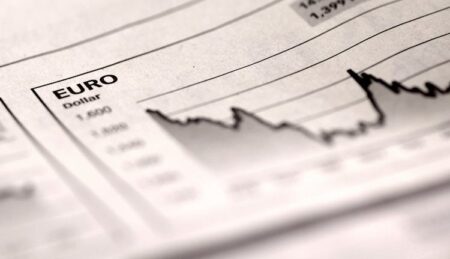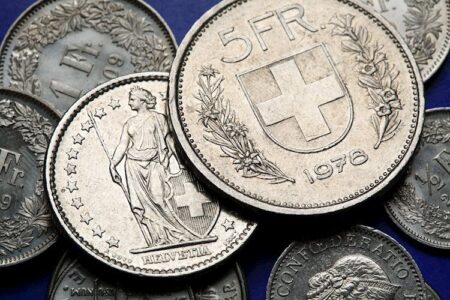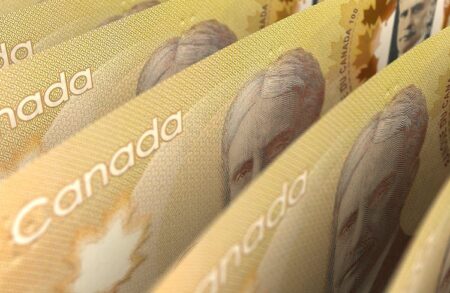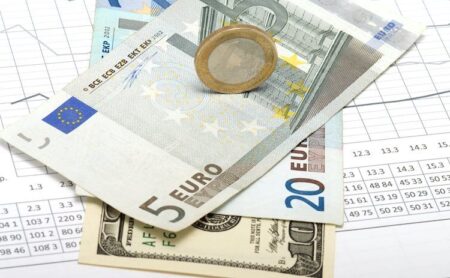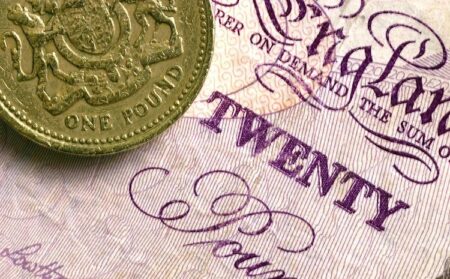- AUD/USD ticks higher to near 0.6150 as the AUD gains even though RBA dovish bets swell.
- The Fed is expected to deliver only one interest rate reduction this year.
- Investors await the US inflation and the Australian employment data for December.
The AUD/USD pair moves higher to near 0.6150 in Monday’s North American session. The Aussie pair gains even though the US Dollar (USD) outperforms a majority of its peers as traders have trimmed Federal Reserve (Fed) dovish bets after the release of the upbeat United States (US) Nonfarm Payrolls (NFP) data for December.
The US Dollar Index (DXY), which tracks the Greenback’s value against six major currencies, posts a fresh over two-year high above 110.00.
The US NFP report showed that demand for workers remained robust. Also, the Unemployment Rate decelerated. This scenario is favorable for the US Dollar as it weighs on Fed dovish bets.
Analysts at Macquarie expect the Fed to cut borrowing rates only once this year, with the current interest rate cycle bottoming in the range of 4.00%-4.25%. The projection of only one interest rate reduction is lower than the two, which Fed officials collectively anticipated in the latest Summary of Economic Projections (SEP) dot plot.
The next trigger for the US Dollar is the Consumer Price Index (CPI) data for December, which will be released on Wednesday.
Meanwhile, investors have underpinned the Australian Dollar (AUD) against the USD even though traders price in a roughly 75% chance of a rate cut by the Reserve Bank of Australia (RBA) in February’s policy meeting.
On the economic front, investors will focus on the Australian employment data for December, which will be released on Thursday. The employment report is expected to show that the economy added 15K workers, fewer than 35.6K in November.
Australian Dollar FAQs
One of the most significant factors for the Australian Dollar (AUD) is the level of interest rates set by the Reserve Bank of Australia (RBA). Because Australia is a resource-rich country another key driver is the price of its biggest export, Iron Ore. The health of the Chinese economy, its largest trading partner, is a factor, as well as inflation in Australia, its growth rate and Trade Balance. Market sentiment – whether investors are taking on more risky assets (risk-on) or seeking safe-havens (risk-off) – is also a factor, with risk-on positive for AUD.
The Reserve Bank of Australia (RBA) influences the Australian Dollar (AUD) by setting the level of interest rates that Australian banks can lend to each other. This influences the level of interest rates in the economy as a whole. The main goal of the RBA is to maintain a stable inflation rate of 2-3% by adjusting interest rates up or down. Relatively high interest rates compared to other major central banks support the AUD, and the opposite for relatively low. The RBA can also use quantitative easing and tightening to influence credit conditions, with the former AUD-negative and the latter AUD-positive.
China is Australia’s largest trading partner so the health of the Chinese economy is a major influence on the value of the Australian Dollar (AUD). When the Chinese economy is doing well it purchases more raw materials, goods and services from Australia, lifting demand for the AUD, and pushing up its value. The opposite is the case when the Chinese economy is not growing as fast as expected. Positive or negative surprises in Chinese growth data, therefore, often have a direct impact on the Australian Dollar and its pairs.
Iron Ore is Australia’s largest export, accounting for $118 billion a year according to data from 2021, with China as its primary destination. The price of Iron Ore, therefore, can be a driver of the Australian Dollar. Generally, if the price of Iron Ore rises, AUD also goes up, as aggregate demand for the currency increases. The opposite is the case if the price of Iron Ore falls. Higher Iron Ore prices also tend to result in a greater likelihood of a positive Trade Balance for Australia, which is also positive of the AUD.
The Trade Balance, which is the difference between what a country earns from its exports versus what it pays for its imports, is another factor that can influence the value of the Australian Dollar. If Australia produces highly sought after exports, then its currency will gain in value purely from the surplus demand created from foreign buyers seeking to purchase its exports versus what it spends to purchase imports. Therefore, a positive net Trade Balance strengthens the AUD, with the opposite effect if the Trade Balance is negative.
Read the full article here


